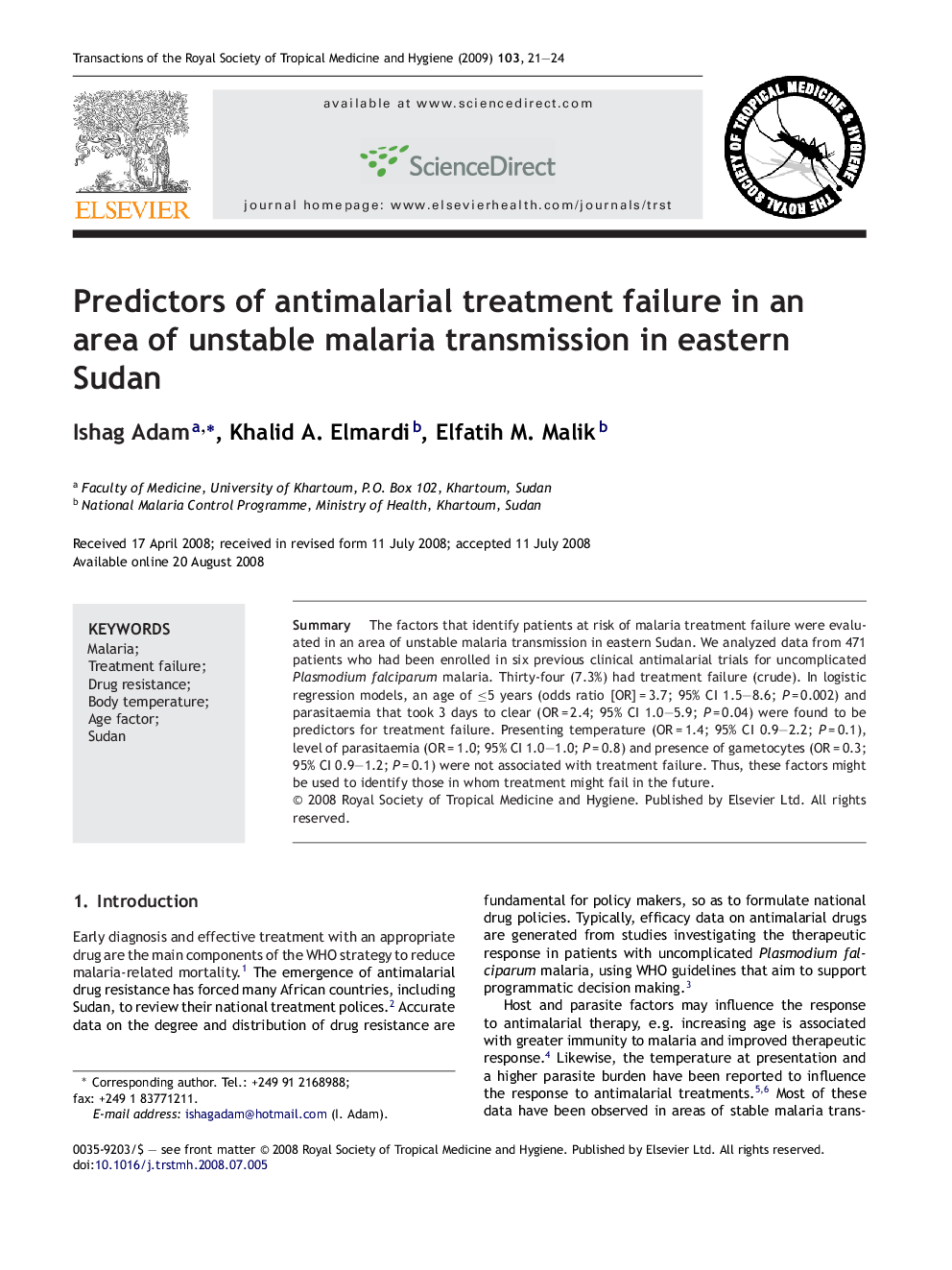| Article ID | Journal | Published Year | Pages | File Type |
|---|---|---|---|---|
| 3420662 | Transactions of the Royal Society of Tropical Medicine and Hygiene | 2009 | 4 Pages |
Abstract
The factors that identify patients at risk of malaria treatment failure were evaluated in an area of unstable malaria transmission in eastern Sudan. We analyzed data from 471 patients who had been enrolled in six previous clinical antimalarial trials for uncomplicated Plasmodium falciparum malaria. Thirty-four (7.3%) had treatment failure (crude). In logistic regression models, an age of â¤5 years (odds ratio [OR] = 3.7; 95% CI 1.5-8.6; P = 0.002) and parasitaemia that took 3 days to clear (OR = 2.4; 95% CI 1.0-5.9; P = 0.04) were found to be predictors for treatment failure. Presenting temperature (OR = 1.4; 95% CI 0.9-2.2; P = 0.1), level of parasitaemia (OR = 1.0; 95% CI 1.0-1.0; P = 0.8) and presence of gametocytes (OR = 0.3; 95% CI 0.9-1.2; P = 0.1) were not associated with treatment failure. Thus, these factors might be used to identify those in whom treatment might fail in the future.
Related Topics
Life Sciences
Immunology and Microbiology
Applied Microbiology and Biotechnology
Authors
Ishag Adam, Khalid A. Elmardi, Elfatih M. Malik,
